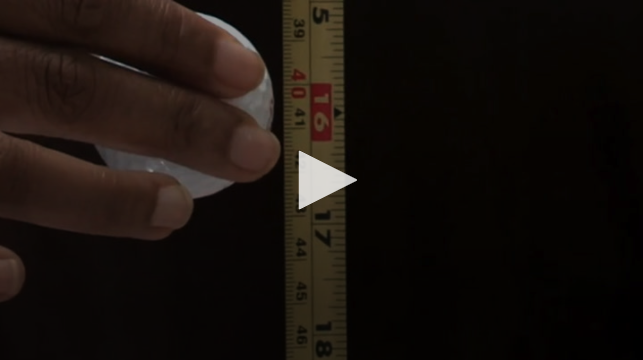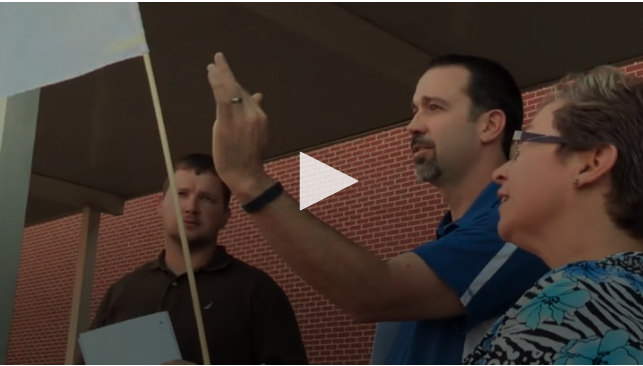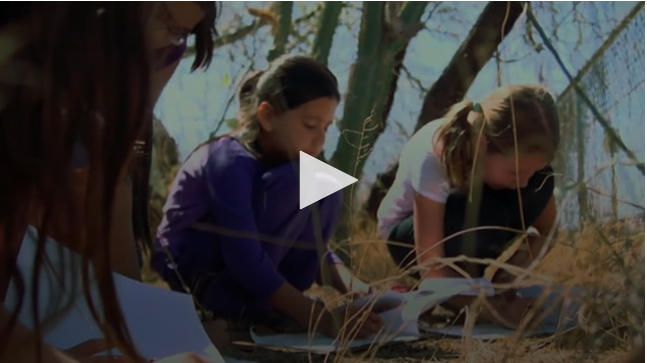How might we use the 3-D learning vision to inform the NGSS course pathways we seek?
Back in November, I was desperately seeking resources that would reveal the one road that would allow our busy science teachers to deliver NGSS content — and all of its pre and post preparations — effectively and effortlessly to all students. Resources that would reveal the most efficient way to bring the 3-D Learning vision to the classroom.
But, if the 3-dimensions of NGSS are designed to connect science to the lives of students, would it follow that they’re also designed to connect science to the lives of science teachers?
It occurred to me that by actually using the 3-D learning vision, I could inform the very NGSS course pathway I was seeking.
Dimension 1: Practices

VIDEO: NGSS: Science & Engineering Practices
Two roads diverged in a wood and I – I took the one less traveled by, and that has made all the difference.
~Robert Frost
As district science coordinator, I began my personal journey toward an NGSS shift in April of 2014. It started with a visit to the American Association for the Advancement of Science and their assessment writing conference held in Washington, D.C. Here, I engaged in a group investigation of science content and assessment guided by Project 2061: Science for All Americans and Project 2061: Atlas of Science Literacy. Each inquiry that followed was an exercise in asking different kinds of questions — questions that increased in complexity.
Each subsequent cognitive, social, and physical practice allowed me opportunities to engage in rich conversations with other passionate professionals. From there, everywhere I went I was seeking resources. Through thought exercises sparked by these resources, I continually developed, examined, and redesigned models of possible 9-12 pathways.
I was learning through inquiry and discourse around the core ideas of my practice — the foundation of the Science Framework for K-12 Science Education, Science and Engineering Practices in the NGSS.
Dimension 2: Cross-Cutting Concepts

VIDEO: NGSS Crosscutting Concepts
If you don’t know where you are going, you might wind up someplace else.
~Yogi Berra
Linking different domains was exactly what I was seeking to accomplish. As Connecticut was deciding to adapt or adopt NGSS (it was adopted as written in November 2015), we brought classroom teachers on board. The following websites provided us with the intellectual tools to enrich our knowledge base.
We dissected the National Resource Council’s (NRC) frameworks, paying careful attention to the grade band endpoints.
We scoured Paul Anderson’s Bozeman Science.
We sought professional development through:
- NGSX: The Next Generation Science Exemplar
- Project Sing
- Capitol Region Education Council
- Area Cooperative Educational Services
- National Center for Case Study Teaching in Science
- Teaching Channel
Dimension 3: Disciplinary Core Ideas

VIDEO: NGSS: Disciplinary Core Ideas
Once we were clear on the what and when, we faced the challenge of how. What would this look like in the classroom?
To focus 9-12 science curriculum, instruction, and assessments, we continue to seek out resources. However, I could now provide a key tool for understanding the broad importance of scientific knowledge. I presented our plan to the Board of Education — which was overwhelmingly approved — and created a similar presentation for the PTSA and additional members of our community with the help of, but not limited to, the following resources:
- NGSS Evidence Statements
- National Science Teachers Association HUB
- NGSS Appendices
- Next Generation Science Storylines
- Phenomena for NGSS
- Project Wet
- 5E Instructional Model
When I wrote my first post about NGSS Course Pathways, I admit that I was faced with more challenges than excitement. But as I write this post, I find myself excited about the challenges ahead. So I ask you, when you transition to NGSS at the high school level, which approach will you favor? Robert Frost’s “Road Not Taken” or Yogi Berra’s “If you don’t know where you are going, you might wind up someplace else.” No matter which path you choose, I wish you a pleasant journey.






